 |  |
by Karen Deal, the Baja Maestra
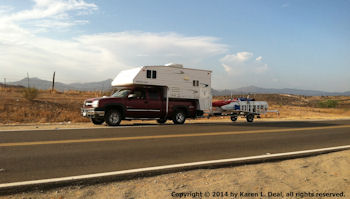
It was only a few years ago that Baja became accessible to drivers, with the completion of Mexico Federal Highway 1, also called, Trans-Peninsula Highway. The old road was more of a dirt path with steep cliffs and boulder filled arroyos; a dusty sparsely populated road with a history of its own. Fortunately for those of us who love to drive the Baja, the adventure no longer requires nerves of steel. Driving in Baja is richly rewarding if you keep a few things in mind. Here are my baker’s dozen driving tips for Baja.
1. Avoid Driving at Night
In preparation for my first Baja trip, I read everything I could about driving in Mexico. Every article said, ‘don’t drive after dark’ but no one ever said why. I thought if I drove at night, I might be kidnapped, given all the negative press I’d read. I carefully planned my stops so that I would not be driving at nighttime. But, my last two nights on the road, I had to drive after dark. That is when I learned the real reason for the caution. It’s not kidnappers, it is cows! Highway 1 runs through rural areas where livestock freely roam. The heat of the day makes grazing more comfortable at night. If you come over a hill to encounter a small group of cows, you will be in trouble, not to mention the cows. It is a terrible sight to see a dead horse on the side of the road, hit by a traveler the night before. There are no street lights, so it is impossible to see your surroundings, therefore, avoid driving after dark, but let go of the fear of the big, bad kidnapper in the bushes!
2. Highway 1 is Narrow
A major challenge of Baja’s Highway 1 is that it is very narrow. It is the north – south road for the entire 1000 miles, traveled by 18 wheelers delivering goods from the north, as well as Aquila buses, the Mexican equivalent of Greyhound. It is frightful when an enormous vehicle comes straight at you on a narrow road, or goes around a curve at the bottom of a mountain at the same time you do. I recommend adjusting your speed to avoid driving around curves or cliffs at the same time as an oncoming large vehicle. In addition, it is not uncommon to encounter cyclists sharing the road with you, weighted down with gear that all but topples them over. Encounters like these are amplified at night time.
While traveling south in my truck camper, I was side swiped on a curve by a double tractor trailer truck. He was going north, so the trailer was empty, otherwise it could have been deadly. The back of his second trailer crossed the center line and struck me. Luckily my truck and camper only sustained minor damage. Give leeway to the big guys!
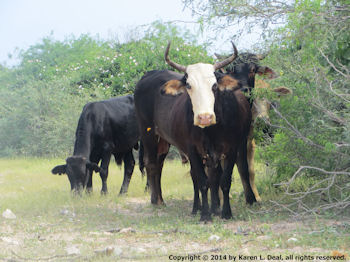
3. Hazards, Headlights, and the Left Turn Signal – How the Mexicans Do It.
Use your hazard lights when you need to slow down in response to something ahead. This is the custom and it alerts the person behind you not to pass. This applies to anything from a goat in the road to an unexpected tope. A TOPE is a speed bump. They can be very large and destructive to your vehicle if you hit one going too fast. Watch out for the posted TOPE signs.
Use your headlights, flashing them on and off, to alert oncoming traffic of the hazard you just passed that they are about to encounter. You may be saving the life of a goat or your oil pan!
One of the most interesting and dangerous habits of Mexican drivers is their use of the left turn signal. Because passing is inevitable on a two lane road, slower moving car drivers will use the left turn signal to let the car behind them know when it is ok to pass. But this tradition is misleading at best. What if the driver in front of you is actually signaling a left turn? It is the perfect recipe for an accident. Perhaps the worst thing about this misguided signal is that it makes it very dangerous when you want to make a left turn. You must remember that the person behind you may take you turn signal as a signal to pass. When I need to make a left turn from the highway, I put my hazard lights on, gradually slow down, and give the left turn signal with my left arm out of the window. Watch the vehicle behind in case he tries to pass, and watch out for oncoming trucks that might take your left arm off on the narrow lane.
4. Distractions
I love the beauty of Baja. Every inch possesses a picturesque scene. My tendency is to take in the sights while I’m driving. No matter how familiar the road, it is unsafe to become distracted. Pull over and enjoy the view. With the narrow road, no medians or shoulders, and only a few guard rails, not paying attention can be fatal.
5. Supplies: Gas, Water, and Toilet Paper
Get them whenever you can, they may not be unavailable ahead. This is especially essential in the Catavina Desert, between El Rosario and Guerrero Negro. If you get stuck, ask a Mexican if you can buy a gallon. If they have it, they will help you – be generous – they are rescuing you. The gas company in Mexico is Pemex. It is the only company, so there is no need to ‘shop around’ for a good price. When buying gas, make sure the pump is set to zero before pumping begins. If someone washes your windows, give them a small tip (5 pesos), even when it is the gas attendant. It is not uncommon to also give a small tip to the person who pumps your gas.
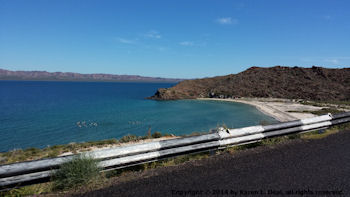
Keep a good amount of bottled water with you at all times, not only for you and pets traveling with you, but also for your car should it over heat in the desert. Temperatures can reach over 100 in the summer.
Mexican Highway is a road through the Outback of Baja connecting small pueblos and a few moderate size towns. Therefore, most of it is isolated and desolate. Bathrooms are few and far between. It is almost inevitable that you will need to pull over and do your business behind a large cactus – just beware of rattle snakes! Just kidding….sort of! Make sure you carry your ‘necessaries’ with you in the car and remember to dispose properly. I also recommend a few packages of sanitized hand wipes.
6. Repairs
No one is more adept at fixing a car, even without the proper parts, as a good Mexican mechanic. Ask the locals for recommendations. Get a price in advance, and remember that your options may be limited. Be prepared to pay in cash. Friendliness, good manners, and generosity will go a long, long way. Mexicans are helpful people. As my German doctor friend told me, "If you get in trouble on the road, it will be the Mexican who stops to help you."
7. Drunk Drivers
Drinking is a favorite pastime; my advice here is to ALWAYS have a designated driver! The margaritas are delicious and strong, make sure you do not drink and drive. Weekends are a favorite Mexican party time, so be especially careful of others who may be intoxicated. There are open container prohibitions in Mexico, however, they are rarely enforced so you may see people drinking and driving.
8. Seatbelts
Wear your seatbelts at all times. Your chances for a seatbelt violation are greatest in a larger city where your license plate gives you away as a tourist. You are an easy mark. I fell into this trap in La Paz but was able to cry my way out of it, along with a $100 pesos mordita. ($10 US)
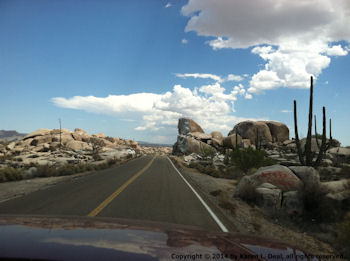
9. Military Checkpoints
There are 4 or 5 military checkpoints along the Baja Peninsula. Don’t let the sight of uniforms and machine guns alarm you. These are young military men whose job it is to deter crime. They will ask you where you are from and where you are going. Have your answer prepared: "Hello, I am from California and I’m a tourist driving to La Paz." They will ask you to step out of the vehicle so they can perform a routine inspection. Take your wallet and/or purse with you, secure or remove any pets, and casually watch your belongings as they inspect. Be courteous and cooperative and you will be on your way in no time.
10. The Police
Should you be stopped for a traffic violation, you will be asked for your driver’s license, registration and told what you did wrong. My advice is to try to talk your way out of it. If that doesn’t work, you will need to go to the police station where you will pay a fine and get your license back. For minor traffic infractions, there is the Mexican ‘mordita.’ Simply put, it is a bribe and technically, you shouldn’t do it. However, you will not be arrested for trying it, like in the States. Discreetly show the officer 100 or 200 pesos and see what they do. They will either take it, or not. I’ve been stopped twice in Baja. My Mexican friend was able to talk the officers out of the tickets, one included a mordita and one did not.
11. Paperwork
The following paperwork should always be with you when driving: Drivers’ License, Registration, Proof of Mexican Insurance (Baja Bound of course!), Personal Contact Names and Phone Numbers, Passport.
12. Road Sign Translations
ALTO - STOP
TOPE - SPEED BUMP
PELIGROSO - DANGEROUS
CUIDADO - CAUTION
DESPACIO - SLOW
DERECHA - RIGHT
IZQUIERDO - LEFT
DERECHO - STRAIGHT
ENTRADA - ENTRANCE
SALIDA - EXIT
DESVIACION - DETOUR
CURVA PELIGROSA - DANGEROUS CURVE
CRUSE DE PEATONES - PEDESTRIAN CROSSING
ZONA ESCOLAR - SCHOOL ZONE
ZONA DE GUANDO - LIVESTOCK ZONE
NO UTILIZAR FRENO CON MOTOR - NO ENGINE BREAKING
NO MANEJE - DO NOT DRIVE WHEN TIRED
NO MALTRATE LAS SENALES - DO NOT DISREGARD THE SIGNS
NO TIRAR BASURA - DO NOT THROW TRASH
NO HAY PASO - ROAD CLOSED
NO REBASE - NO PASSING
PROHIBIDO EL PASO - DO NOT PASS
GUARDE SU DISTANCIA - WATCH YOUR DISTANCE
DISMINUYA SU VELOCIDAD - SLOW DOWN
REDUCTOR DE VELOCIDAD - REDUCE YOUR SPEED
RESPETE LIMITE DE VELOCIDAD - RESPECT THE SPEED LIMIT
13. Baker's Dozen Recommendations
Don’t rush, drink in all the beauty of each variation in landscape, stop often, take tons of pictures, eat at a little Bodega without worry (everyone has purified ice and water these days), and most of all ENJOY EVERY MINUTE OF YOUR TIME IN BAJA!
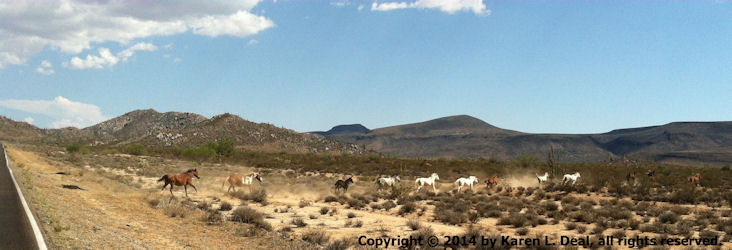

Used them for the first time - twice in the past 10 days. LOVED how easy it was to customize my own...

Great service, quick response time.